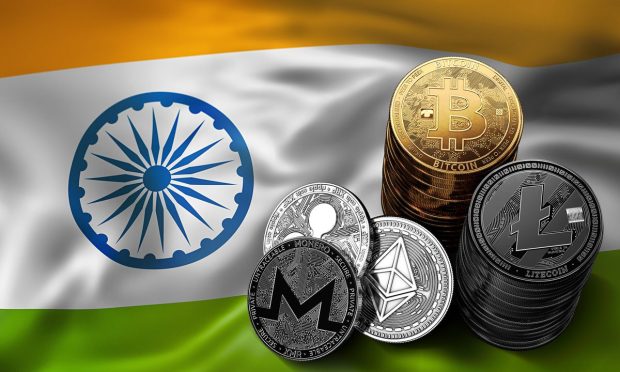Announcing Crypto Trading Tax and Digital Rupee Plans, India Makes Clear Payments Are Out

India’s finance minister just announced that India’s next budget will include a 30% tax on cryptocurrency, suggesting a long-feared total ban is likely off the table.
That 30% tax puts crypto trading income in the country’s highest tax band, according to New Delhi Television (NDTV).
And in a one-two announcement of big news for India’s digital asset industry, Finance Minister Nirmala Sitharaman revealed that a central bank digital currency (CBDC), will launch by the end of fiscal year 2022-2023. With the arrival of a digital rupee on top of China’s soon-to-launch digital yuan renminbi, more than 2.8 billion people — over one-third of the world’s population — will use a CBDC.
Aside from the changes CBDCs will bring to everything from payments to financial inclusion, India’s announcement will likely put more pressure of the U.S., European Union and other large economies to bring in central bank-issued digital assets.
See: Fed’s Digital Dollar Report Finally Drops, With More Questions Than Answers
India, which only created a FinTech department three weeks ago, is moving far faster than the U.S. After several years of wrangling, the Federal Reserve on Jan. 20 released a long-awaited white paper that it made very clear was “the first step in a public discussion” to determine if a digital dollar is even desirable.
Read more: India’s Central Bank Starts FinTech Division
Crypto Trading, Not Payments
While presenting the government’s budget to Parliament on Feb. 1, Sitharaman said, “I propose to provide that any income from transfer of any virtual digital asset shall be taxed at the rate of 30 per cent.”
She added that a 1% tax will also apply to all crypto transactions, and that “losses from transactions in virtual digital assets cannot be offset against other income.” Gifts of cryptocurrency will likely become a lot less popular, as the recipient will owe that 30% tax.
In a sign that Prime Minister Narendra Modi’s government has not changed its mind about banning the use of cryptocurrencies as a method of payment, at a press conference after her speech, Sitharaman added that crypto will be treated as digital assets.
“Currency rests only with the RBI,” Sitharam said, referring to the Reserve Bank of India. “Everything else is crypto assets and will see 30% tax.”
Reuters added that the tax went further, quoting a partner at an Indian tax consulting firm saying that with other surcharges and a cess tax to boot, the rate traders will pay could end up being as high as 42%.
‘Cryptocurrency’ Ban
The finance minister even took exception to the term “cryptocurrency,” with NTDV reporting it that she made it clear that the use of “currency” is “incongruous with India’s plans.” Crypto assets would be treated like stocks or gold but “cannot be used to make payments,” she said.
In her speech to Parliament, Sitharam avoided its use, instead speaking of “virtual digital assets” — essentially cryptocurrencies and NFTs.
Sitharam also cast some doubt on whether the tax announcement really means crypto trading will be legalized.
Noting that the government is still “collecting inputs” on crypto regulation, Sitharam said, “I don’t wait till regulation comes in for taxing people who are making profits.”
The RBI is strongly against any legalization of cryptocurrencies, having been forced by the Supreme Court to end what amounted to a de facto ban on banks working with cryptocurrency exchanges or customers.
And in a speech to the World Economic Forum in Davos, Switzerland, last month, Prime Minster Modi called for coordinated global action on regulating cryptocurrencies
See also: India’s Prime Minister Calls for Global Action on Crypto
“Cryptocurrency is an example of the kind of challenges we are facing as a global family with a changing global order,” he said. “To fight this, every nation, every global agency needs to have collective and synchronized action.”
Digital Rupee in High Gear
Finance Minister Sitharam also announced an aggressive timetable for launching a digital rupee, which Prime Minster Modi has strongly supported.
Promising that a CBDC “will give a big boost to the economy,” Sitharam said the government planned to have the RBI issue its digital rupee in FY 2022-2023. “Digital currency will also lead to a more efficient and cheaper currency management system.”
China began working on its digital yuan as early as 2014, didn’t even complete its design until January 2020. In the two years since then, it has run a series of increasingly large and widespread lotteries to test its CBDC, giving away millions of dollars to hundreds of thousands of citizens.
One of the big issues China is dealing with is convincing citizens that switching from physical currency to a digital yuan wouldn’t mean giving up even more privacy. India is likely to face that concern as well, although an RBI report in December said the digital rupee’s benefits will include “ease of transactions with anonymity.”
Read more: Reserve Bank of India’s Acceptance of Digital Rupee Highlights Privacy Concerns
In a report issued earlier in December, RBI Governor Shaktikanta Das, a strong crypto opponent, said the RBI is concerned about the forthcoming CBDC’s cyber security as well as the potential for digital fraud.
See: Cyber Risks Pose Challenge to CBDC Rollout in India; Digital Payments Growing at Record Highs
“A few years ago, we had major concerns around fake Indian currency notes. Similar things can also happen when you are launching a central bank digital currency,” Das said.
On the security front, it’s worth noting that Sitharam confirmed in her Parliamentary speech that India’s CBDC would be built on immutable blockchain technology as well as unspecified “other technologies.”
